Cartagena is one of my favorite travel destinations in Latin America. Located right on the Caribbean sea, Cartagena is a vibrant city with a nice mix of old and new, and once you visit, you’ll realize why this Colombian city has become such a popular destination over the last few years!
It has a rich history, so a little backstory—Cartagena de Indias was colonized by the Spanish in the early 1500s, who used the city as a strategic location for war and a major port in the slave trade, before Colombia gained its independence in 1819. Today, the city has a wonderful multicultural vibe, proudly on display through the food, art, and music you’ll hear throughout the streets.
Get ready for my huge Cartagena travel guide To Colombia’s most vibrant city!
I’ve been lucky enough to visit twice, so I have a good understanding of what to do in Cartagena, Colombia. My hope is that this guide will inspire you to book that Cartagena Colombia trip you’ve been dreaming about!
So keep reading for travel tips, guidance on Cartagena Colombia dos and don’ts, and a full list of Cartagena things to do.
What To Know Before Going To Cartagena
Is Cartagena safe?
Cartagenta travel safety is often a concern, due to lingering headlines about Colombia from the 80s and 90s, but based on my personal experience, Cartagena was quite safe, especially in the more popular neighborhoods for tourists, like Bocagrande, Centro, and Getsemani.
I walked around solo as a woman in those neighborhoods many times and never felt unsafe. Much like visiting any foreign country, when traveling to Cartagena, use common sense, but assuming you’re not walking around drunk and alone at night or flashing giant diamond rings around, you’ll be just fine.
If you want to feel extra secure, travel insurance can be a nice way to have some peace of mind in case something goes wrong on your trip!
Best Time To Visit Cartagena, Colombia
Cartagena’s climate doesn’t vary that much—It’s pretty much hot and humid year round. Generally speaking, winter and early spring are the best times to visit.
Most locals will tell you that January and February are ideal because it doesn’t rain and they celebrate the Feast of Our Lady of La Candelaria in late January/early February so there are a ton of celebrations around the city.
I’ve personally visited Cartagena twice in the fall, which is their rainy season, and it was pretty rainy in September, but November was quite pleasant (aside from the crippling heat and humidity, but that’s unavoidable, no matter when you visit).
How Much Time Do You Need In Cartagena?
You could very easily spend one week in Cartagena, dedicating a few days to exploring the walled city, Getsemani, San Felipe castle, and spending a day or two visiting some of the islands and beaches nearby. But if you plan well, you can definitely get a good taste of everything over the course of a long weekend in Cartagena.
However, with all that being said, I think the ideal Cartagena itinerary would be three to four nights in the city itself and one night at a nearby island. And if you have the time, add some days in Medellin as well, for a full Colombia itinerary!
Getting To Cartagena
It’s fairly easy to travel to Cartagena, Colombia from the United States, especially if you’re on the east coast, as there are several direct flights each week from New York City and Miami, and Spirit Airlines offers a handful of flights each month from Orlando and Fort Lauderdale.
For the west coast girlies, you may need to connect through Bogota, but that should not deter you from living your Cartagena travel dreams! Just book the flight. Do it!
Travel Requirements For Colombia
Before your Cartagena trip can officially begin, you’ll have to make it through customs. Luckily, getting through customs is fairly easy, as long as you’re prepared. There are a few Colombia travel requirements you’ll want to be aware of before landing in the country!
Most importantly, you are required to fill out this Check Mig form online within 72 hours of your arrival to and departure from Colombia. It is fairly simple, and they email you a copy, which you should have handy when you are going through customs in case they ask for it. You have to complete this form when you leave too!
You’ll also want to make sure you have your return flight details and the address for where you’re staying when in Colombia readily available. They didn’t ask me for either the last time I went through customs, but they might, so it’s better to be prepared.
Getting To Your Hotel From The Cartagena Airport
Once you make it out of customs and walk outside the airport, I would take a taxi, unless your hotel has a shuttle or can coordinate a ride for you. Taxis are very plentiful and affordable in Cartagena (I took them pretty much everywhere), but just be careful that you get into a legit yellow taxi, as you’ll be bombarded with offers from regular drivers when you exit the airport.
I would also recommend trying to have some Colombian pesos on hand before you get to the airport, as there isn’t an ATM at the airport, only a money exchange place with less than ideal rates. You can often order foreign currency from your bank, so if you plan on taking a taxi, I’d recommend getting some cash before your trip!
My taxis from the airport from Bocagrande usually cost around 20-25 mil pesos (roughly $5-6 USD), which is a bit more expensive than if you were to walk a few blocks away from the airport, but worth the slightly higher rate for the convenience factor.
The best way to travel in Cartagena, Colombia, in my opinion, is by taxi, and it’s customary to ask the driver for the price before you get in the cab, as they don’t have meters. Uber isn’t technically legal here, although people still use the app and the drivers may ask you to sit up front to avoid suspicion.
They also have a similar app called InDriver where you can put out a request for a ride along with how much you are willing to pay for the ride. My cousin who lives here uses it all the time, but I haven’t personally used it. Don’t use the apps at the airport though!
Can I Use Credit Cards In Cartagena?
I would definitely have cash on you for taxis, street vendors, and some restaurants, but for the most part, you should have no issues using credit cards in Cartagena. It is kind of hit or miss though, so better to be prepared.
Don’t forget to bring a backup debit card and travel credit card, just in case a machine eats your card!
How Much Spanish Do I Need To Know In Cartagena?
Unlike my time in Mexico City, where plenty of people spoke English, you will want to have at least a basic knowledge of Spanish in Cartagena. In Centro, which is the main tourist area, you will definitely encounter people who will happily speak English to you, but elsewhere, it is less common.
I would highly recommend learning key phrases in Spanish for ordering at a restaurant and hailing a taxi, and be patient when communicating. Even the museums had very limited signs in English!
If you are trying to learn or practice your Spanish, Cartagena is a great place to visit, because you will definitely be able to try your best without people automatically switching into English!
What To Pack For Cartagena?
I live in Savannah, Georgia, which is known for being hot and humid. And let me tell you… Cartagena is HOTTER AND MORE HUMID. You will get sweaty. You will immediately want to put your hair up. You will lose your desire to do your hair and makeup, I promise you.
Because of the climate, you’re going to want to pack light fabrics, shorts, linens, and airy dresses (which is hard for me as someone who mostly wears black). I’d also be sure to pack a hat, plenty of hair clips to get your hair off your neck, and loads of sunscreen.
(PS: I highly recommend this Shiseido sunscreen stick—It’s so easy to swipe on your face, ears, neck, and chest when running around the city.)
As for shoes, I’m a huge Tevas gal. They’ve become my new travel shoe, as my feet never get sore and I very rarely get blisters from them. You’ll presumably want to walk around Centro and Getsemani, so making sure you have comfortable shoes is important.
Also, if it rains, the streets can sometimes flood, as the old city’s infrastructure is slow to drain, so having at least one pair of shoes that can get a bit wet is wise.
What Not To Do In Cartagena
There’s nothing really worth calling out that you can’t do in Cartagena that you wouldn’t want to do in other foreign countries. I think the biggest thing is avoiding the tap water.
Plenty of people drink it and are totally fine, but as a tourist with a limited amount of time in the country, I’d recommend sticking to bottled water, because there’s nothing worse than having a trip ruined by new microorganisms getting into your system…
While traveling with Kara, our CEO, in Nicargua a few years ago we both got super sick from what we think was coffee not boiled long enough. Trust me, you don’t want to deal with that!
Otherwise, don’t do anything stupid and you should be good to go! Now let’s get into our travel Guide Cartagena, Columbia.
What To Do, See, And Eat In Cartagena (A Full Travel Guide To Cartagena, Colombia)
Where To Stay In Cartagena (+ Best Cartagena Hotels)
If you’re looking to be right in the middle of the action, the best neighborhood to stay in Cartagena is the Centro Historico, which is the old town of the city surrounded by the city walls and the best place for Cartagena history.
In this neighborhood, you’ll find colorful colonial architecture, tons of great bars and restaurants, museums, and more. There are some really gorgeous luxury hotels in this neighborhood like Casa San Agustin, Casa Pestagua, and the Sofitel Legend Santa Clara, which also has a really nice rooftop bar, which I’ll go into more later!
If you’re on a budget or looking for somewhere to stay in weekend in Cartagena and want to be close to all of the incredible nightlife, Getsemani is the place to be. Getsemani is the artsy neighborhood where the alleys come to life at night with pop up bars serving up 2-for-1 margaritas, mojitos, and more.
There are plenty of hostels and even a boutique hotel or two around Getsemani. My favorites are Selina or Casa Mama Waldy, which both have nice rooftop bars and often host events, so they are a great way to save some money, make friends, and have a little fun in Cartagena on a budget.
Another great neighborhood for tourists is Bocagrande, which is one of the wealthiest neighborhoods in Cartagena. Unlike the Getsemani neighborhood and Centro, Bocagrande is super modern, with high rise buildings lining the sea for serious Miami vibes.
You can rent a really nice house in this neighborhood, or stay in luxury hotels, like the Hyatt Regency or Hilton (which is where Barack Obama stayed in 2012). Your hotel might even have a private beach if you do your research. If you stay in Bocagrande, you’ll have to either walk about 20-30 minutes to get to Centro, or take more taxis, so it’s something to keep in mind, but the views of the water are worth it in my opinion.
11 Best Restaurants & Bars In Cartagena
There are so many great bars and restaurants in Cartagena, running the gamut between some of the most highly rated restaurants in all of South America to deliciously cheap street food. Here are a few of my favorites, which can mostly be found in Bocagrande, Getsemani, and Centro.
7 Cielos
7 Cielos is a relatively new restaurant located in Bocagrande, but it definitely has staying power thanks to its beautiful rooftop with great views of the city, impeccable vibes, and delicious food and drink menu. It’s the perfect place for dinner during a girls trip to Cartagena, or any group trip really!
Because the vibes were so good, we assumed the food might be mediocre, but we were quickly proven wrong! If you are wondering what to do in Bocagrande, definitely plan a trip to 7 Cielos for golden hour drinks or even a full on dinner.
Alquimico
Okay, so in complete transparency, I caught a cold this last time I was in Cartagena, so my plans to go to Alquimico were thwarted. However, I have it on good authority from a local that Alquimico is one of the best bars in Cartagena.
It also happens to be #9 on the list of the 50 best bars in the world AND the Real Housewives of New York went there during their trip to Cartagena, so it’s safe to say that the vibes are good.
I’m bummed that I didn’t get to test it out for myself, but you should go and let me know how it is!! It’s definitely one of my must-try places for my next trip.
Ely Cafe
Ely Cafe is a wonderful brunch spot located in Bocagrande (they also have a second location in Manga). They have a little bit of everything from arepas and pastries to pizzas and avocado toast. Plus, the vibes are really lovely.
La Cocina De Pepina
La Cocina de Pepina is a small traditional Colombian restaurant in Getsemani, known for their Mote De Queso (aka cheese soup) which is a traditional dish from Colombia’s Caribbean coast. It combines potatoes, onions, and of course, cheese, and yes, it is as good as it sounds.
If you’re looking for some typical Colombian food, this is the spot to go. But just a heads up—Because the restaurant is small (and good), there is often a wait, but we went in on a Tuesday night and were able to quickly get a table!
Arepas Colombitalia
If you’re walking around Getsemani and looking for a convenient, to-go friendly meal, I’d highly recommend getting an arepa at Arepas Colombitalia. They are affordable, delicious, and as an extra bonus, they have a cute Encanto mural on the wall. Plus, they are right by the world famous Cafe Havana, so you can pop over for a cocktail and some salsa dancing after eating your arepa!
La Cevicheria
La Cevicheria is a small seafood restaurant in Centro, which came to fame in the early 2000s after Anthony Bourdain visited. As you can probably guess based on the name of the establishment, they specialize in ceviche.
I ordered the shrimp ceviche when I visited, and it was really good! They also have a variety of different ceviches if you want to be more adventurous.
La Cevicheria is also conveniently located directly next to the Sofitel Santa Clara Cartagena, which is home to Botika Bar, which is a wonderful rooftop bar in Centro.
Buena Vida
Located in Centro, Buena Vida is a popular Caribbean restaurant, with a great rooftop. They have yummy cocktails and fun seafood dishes, like my personal favorite, the Buena Vida crab, which is, you guessed it, crab, along with coconut rice, peppers, avocado, and some other veggies.
Botika Bar
As I mentioned above, Botika is a super chic rooftop bar located in the Sofitel Santa Clara in the Centro neighborhood of Cartagena. You’ll want to get dressed up for this one (as much as you can in 95 degree heat), as it is very luxe, with their upscale cocktail menu and views of the Caribbean sea.
I would recommend grabbing a pre-dinner cocktail at Botika, then running next door to La Cevicheria for dinner, before heading out to the bars and clubs in Centro for a night on the town.
Mirador
If you’ve been exploring Cartagena all day and want to grab a beer or spritz before the day is done, Mirador is the place to go. It’s directly across from Monumento Torre del Reloj (the yellow Clock Tower), giving you a great view of the colonial city, as well as the modern skyscrapers of Bocagrande.
Head here for sunset for great views and even better Instagram pics!
Celele
If you aren’t someone who plans things in advance, you might as well just skip over this paragraph, because Celele is a restaurant that requires reservations way in advance, as it has been named one of the best restaurants in all of Latin America (it’s currently #16 on the list!).
Chef Jaime Rodriguez opened Celele in 2018 after spending years researching and documenting indigenous Caribbean-Colombian recipes that were in danger of being lost forever. Now, he serves up inventive dishes and creative cocktails using local ingredients in the heart of Getsemani. Definitely worth a visit if you can get a reservation!
Libertario Coffee Roasters
You can’t go to Cartagena without getting some Colombian coffee. Pop by Libertartio Coffee Roasters Cartagena for a fresh cup as you start your day, or stay a while to enjoy breakfast. Nothing beats a cute coffee shop!
Best Things To Do In Cartagena, Colombia
There is so much to do in and around Cartagena! This old colonial city has so much charm and history, that it’s impossible not to find something that you will enjoy. Whether you are looking to spend some time on the water, experience the culture, or stuff your face with delicious food, here are some Cartagena itinerary ideas to consider.
1. Wander Aimlessly Through Centro & Getsemani
One of the best things to do in Cartagena is to get up early and wander around the walled historic district, which is filled with colorful colonial buildings, and then make your way to the Getsemani neighborhood.
Not only is the city filled with photo opps, but it’s so beautiful that you can have a full day itinerary just soaking in the street art in Getsemani and grabbing cheap food from street vendors that hang out in the plaza Santa Domingo or really anywhere in Centro.
It’s one of the easiest free things to do in a weekend in Cartagena!
If something with more structure is your preference, find yourself a walking tour and explore the city with the help of a local Cartagena, Colombia tour guide, who can share the history and point out the best places for photos, like Santuario de San Pedro Claver (also referenced as San Pedro Claver Church) and Café Mural in Getsemani.
2. Bazurto Market Tour
Pretty much every Cartagena travel guide will spend a majority of their time focused on the Centro Historico and Getsemani, as they are definitely the most touristy parts of town. However, one thing I did that I really enjoyed was a tour of the Bazurto Market with Beyond The Wall CTG.
As the name suggests, this tour takes you beyond the walled city to the Bazurto market, which is where the locals go on a daily basis to buy clothes, food, and pretty much anything else you can think of. This is also one of the best things to do in Cartagena when it rains as you are in and out of shops vs getting soaked on.
Our tour guide Jesus was super insightful and shared his perspective on colonialism in Colombia, the history of slavery (and its lasting effects on the nation), and how it ties into the city’s culture today.
In addition to having some deep convos, Jesus also showed us around the market, bought us different treats and drinks from street vendors, and taught us all about champeta music and dance. Not only was it a great experience, but it felt more authentic to how the majority of Cartagenians live, rather than the touristy version on display in the walled city.
3. Get Drinks In Getsemani At Night
Sure, there are plenty of places where you can grab a drink in Getsemani during the day, but the neighborhood really comes alive at night, as the small alleyways fill up with pop-up bars serving margaritas, mojitos, and Colombian micheladas (not to be confused with Mexican micheladas, the micheladas in Cartagena don’t use tomato juice, it’s just lime and beer).
It feels like you’re at a block party. Honestly, this is one of the top things to do in Cartagena, if you ask me. I may or may not have been at a bar on the streets of Getsemani almost every night I was in town…
I don’t have any “bar” recommendations, but if you tell your taxi driver that you want to go to Plaza de la Trinidad, you’ll be dropped off at a lively square filled with street performers and vendors serving pinchos (aka meats on a stick, which is my favorite) and from there, you can walk to really any of the nearby alleyways for a drink.
I personally enjoyed Callejon Ancho and Callejon Angosto which are near Calle 28, but you can truly just walk like 2-3 blocks from Plaza de la Trinidad and find something amazing! Truly the perfect way to spend a weekend in Cartagena.
4. Visit Castillo San Felipe
Castillo San Felipe, or San Felipe Castle, is an old fortress in Cartagena that was built in the 1600s so the Spanish could be on the lookout for potential attacks by land or sea.
Unfortunately it still suffered a few attacks during the various colonial wars and power struggles over the centuries prior to Colombia gaining independence.
The castle was kind of forgotten about for a bit, so it’s not in the best condition, but it was named a UNESCO world heritage site in the 90s, so now it’s open to the public, although you can’t go in all the tunnels. Fun fact: The historic center of Cartagena is also a world heritage site.
You can take a guided tour or listen to an audio tour to learn more about the history of the fortress, but if you’re not super into history, at the very least you can get some great views of the bay and city!
5. Enjoy The Local Cuisine With A Street Food Tour Or Cooking Class
I’m an eater, okay? I love to eat and I especially love to eat while traveling. Most of my travel plans revolve around where, when, and what we get to eat, and there’s no better way to do that than by taking a literal tour dedicated to finding the best places to eat.
There are a ton of amazing street food tours led by Cartagena tour guides that will take you to their favorite restaurants, street vendors, and off the beaten path spots, so you can get a true taste of the local cuisine. Which in Colombia is a wonderful mix of Caribbean food, fresh fruit, seafood, and pinchos (meat and potato kabobs).
Another way to deep dive into the local flavors is to take a cooking class, where you’ll learn to make Cartagenean favorites, like coconut rice, ceviche, and more. Even if you’re not a cook when you’re at home, there’s no better way to absorb the culture of a place than through food, so I’d recommend giving it a shot!
6. Spot Monkeys And Sloths In Parque Centenario
Nestled right between Centro Historico and Getsemani is Parque Centenario, which is a small public park filled with trees and fountains, and most importantly, wildlife—Like truly the cutest tiniest monkeys you’ll ever see!
There are also sloths, lizards, and other little creatures just minding their own business, living in the trees of this park (it’s not a zoo, in case you were wondering). If you’re spending a day wandering through Centro to Getsemani, Centenario Park is a great place to take a little break and rest in the shade before crossing into Getsemani.
I’d recommend grabbing an iced coffee or limonada and sitting in the park for a bit to see if you can spot some monkeys and sloths. There are guides (both official and unofficial) who will point out the animals to tourists, so if you find one of them, they can show you where to look.
The monkeys are seriously so tiny though, you won’t even believe me until you see them for yourself. They are too fast though (or I’m too slow) so I wasn’t able to get any photos of them.
7. Take A Swim In The Caribbean Sea
In the words of Tinsley Mortimer from Real Housewives of New York, Cartagena is on the water, but it’s not beachy. And that is pretty true, as most of the coastline is not set up for beachgoers, however, there are a few spots in the city where you can take a dip in the Caribbean sea, and I personally like the beaches in Bocagrande.
Located right across from Plaza Bocagrande are some recently upgraded beaches where you can take a quick swim in the sea. I wouldn’t necessarily hang out at these beaches all day (it’s not quite the vibe) but for a nice afternoon swim to cool off, they are perfect.
Day Trips From Cartagena, Colombia
If you’ve successfully knocked out a 3 day Cartagena itinerary and are looking to take a day trip in the area, you’re in luck, because there are quite a few places nearby that are perfect for a quick trip, some of which are not mentioned in your typical Colombia travel guide.
Visit One Of The Nearby Islands
Any Cartagena visitors guide will make mention of this, and for good reason. One of the biggest perks of visiting Cartagena is being able to take a day trip to one of the nearby islands.
The Rosario Island archipelago is the most popular, which consists of 27 different islands, and features many beautiful beach resorts, like the famous Bora Bora Beach Club (not to be confused with actual Bora Bora beach in Tahiti), where you can eat and drink while soaking up the sun.
Everyone I’ve talked to recommends staying overnight in the Rosario Islands, because 1) it’s really lovely and 2) about two hours away by boat, so it can be kind of tough to get there, relax, and get back before the water gets super choppy in the late afternoon.
Another island right near the Rosario Islands is Isla Baru, which is a tiny little island off the Baru peninsula, which will give you the same vibes, but you can technically drive 98% of the way there if you don’t want to be on a boat for hours.
If you want to lounge at a beach on the Caribbean sea but don’t want to worry about making another hotel reservation, Isla Tierra Bomba and Playa Blanca are two great options. It’s only a short boat ride from Bocagrande, so you can easily make the trek there and back for a day at the beach.
Isla Tierra Bomba has several beaches that you can visit, including Playa Linda on the northwest side of the island and Blue Apple Beach on the southwest side of the island. I spent a Saturday drinking beers on Playa Linda (which was great), but next time I want to check out Blue apple beach, which is a boutique hotel and beach club where you can get a day pass for a day of lounging.
One of the other benefits is that Blue Apple Beach has its own boat that can take you to and from the mainland as part of one of their package options, which is much easier than trying to haggle with the local boat captains in Bocagrande (unless you are quite good at spanish, then haggle away because it will be cheaper).
If you want to see them all, consider a boat tour!
Visit San Basilio De Palenque
I didn’t see much about Palenque when I was researching for my first trip to Cartagena, but when I was touring the Bazurto market, my travel guide Jesus mentioned Palenque and I knew I had to visit.
Established in the early 1600s, San Basilio de Palenque was a place of refuge for enslaved people, becoming the first free town for Africans in the Americas. Today, it is home to roughly 3,500 people who continue on the traditions of their ancestors.
Palenque is about an hour and a half from Cartagena, so there are many tour companies, like Black Legacy Experience, that offer day trips to make it easy for visitors to experience Palenque and its unique Afro Caribbean culture.
If you want to spend some time thinking more critically about race, history, and culture and how it’s impacted the region, I’d highly recommend adding a trip to Palenque to your Cartagena bucket list.
I hope this helps you plan a wonderful trip to Cartagena, and stay tuned for my full travel guide for Medellin, Colombia!
Have questions or are there places I missed? DM me at @mkrichtmancreative





















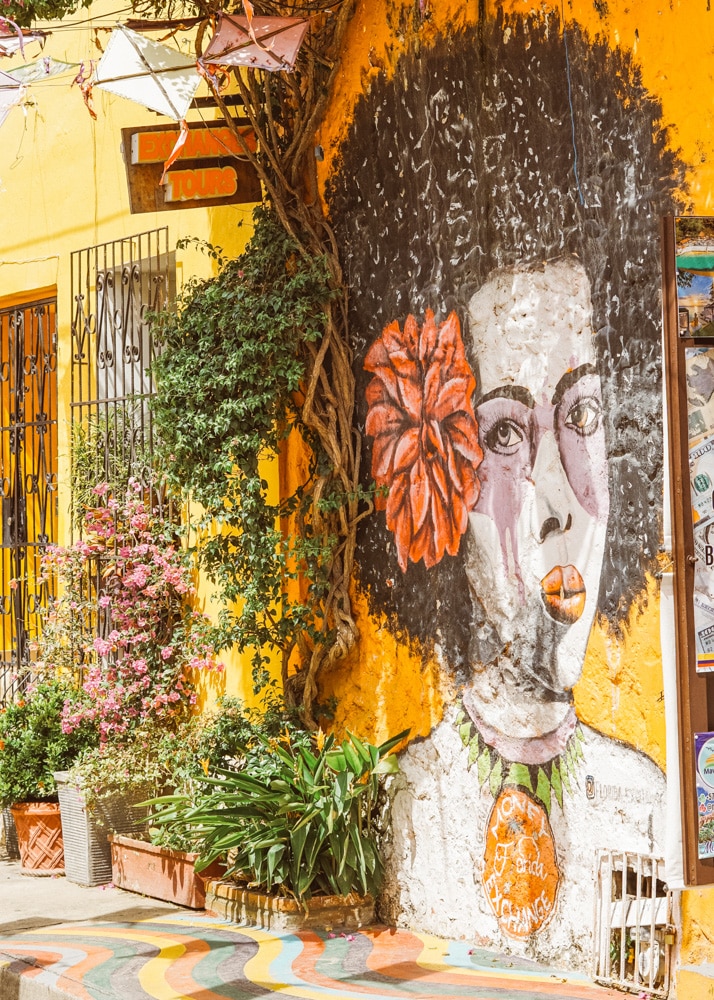


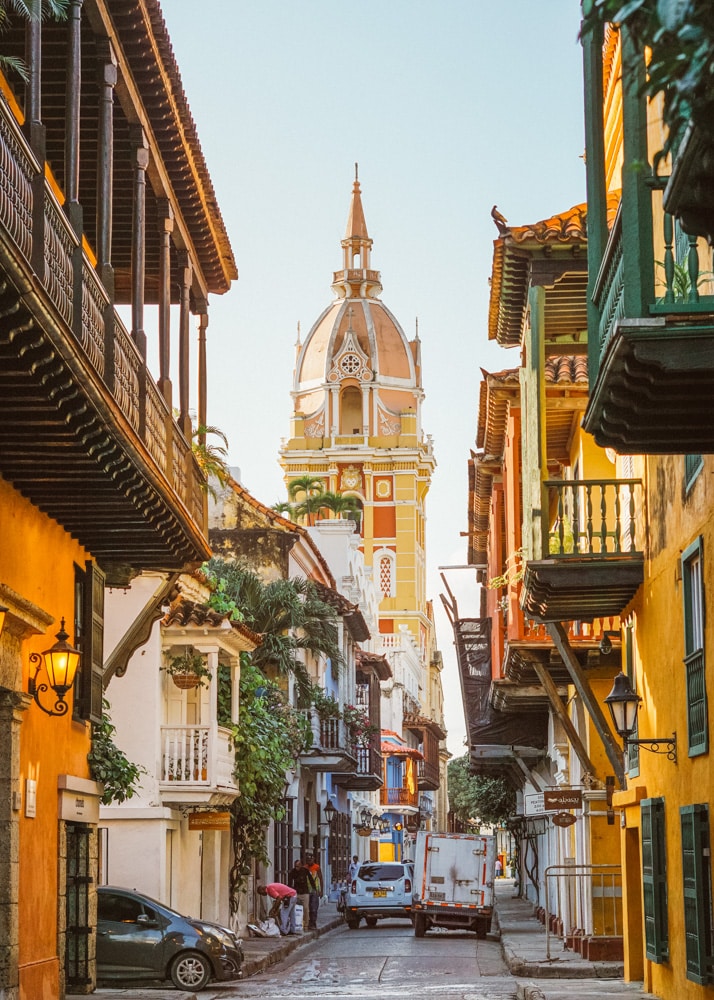






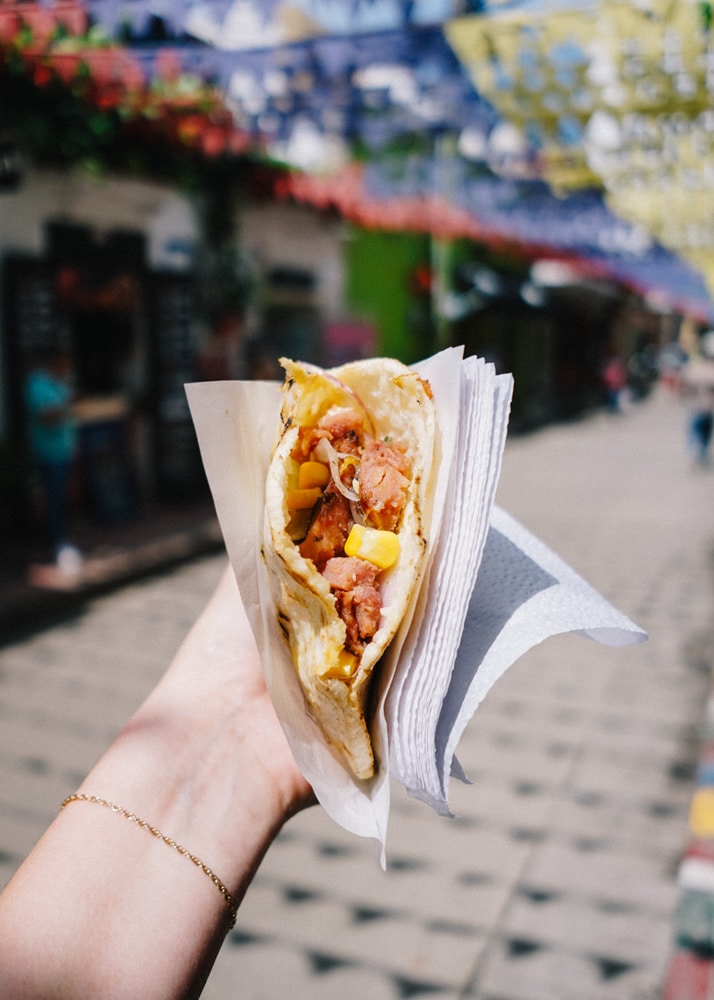

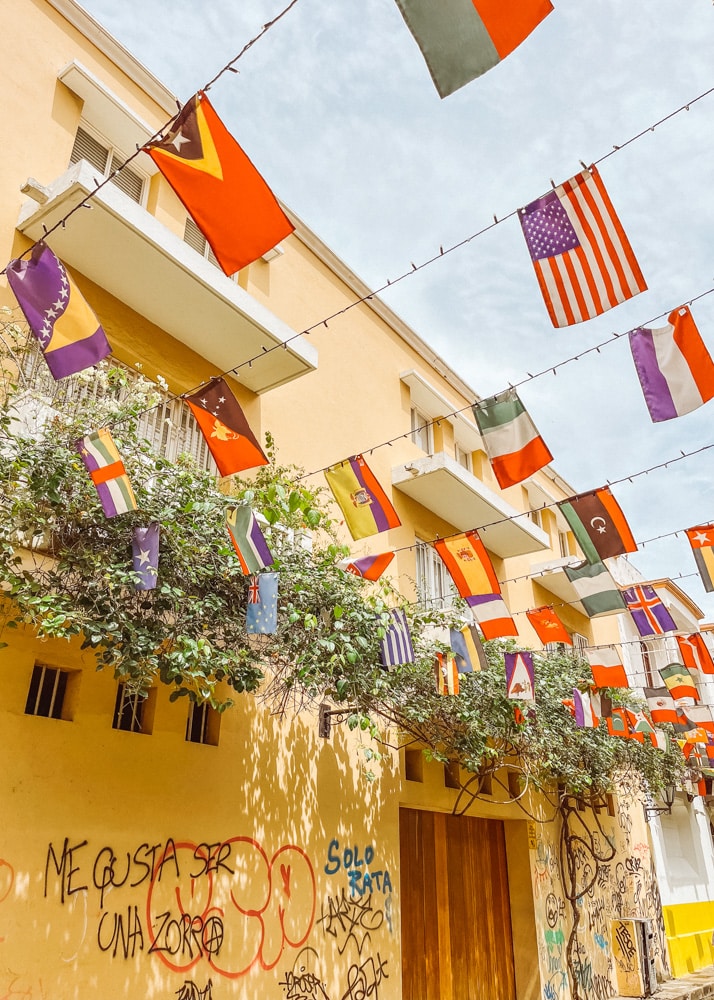




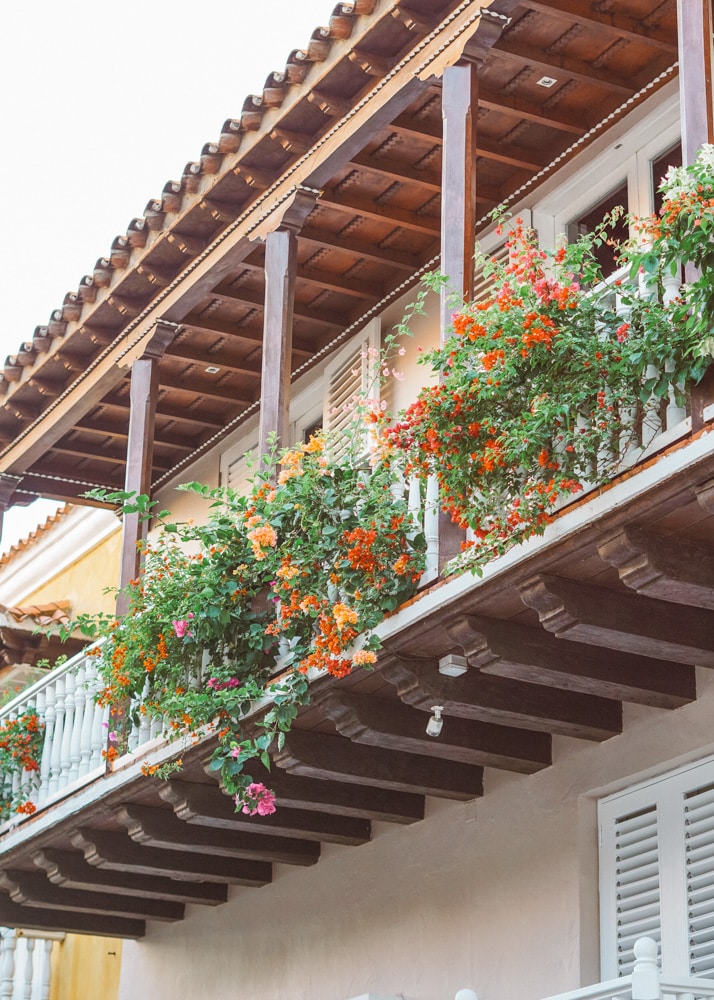













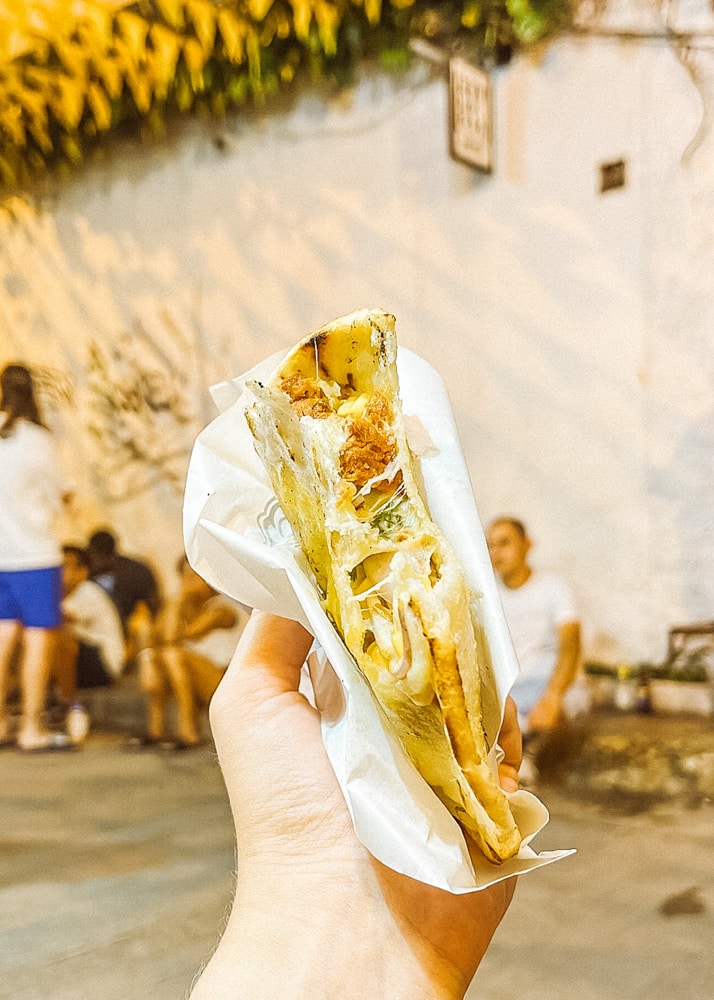





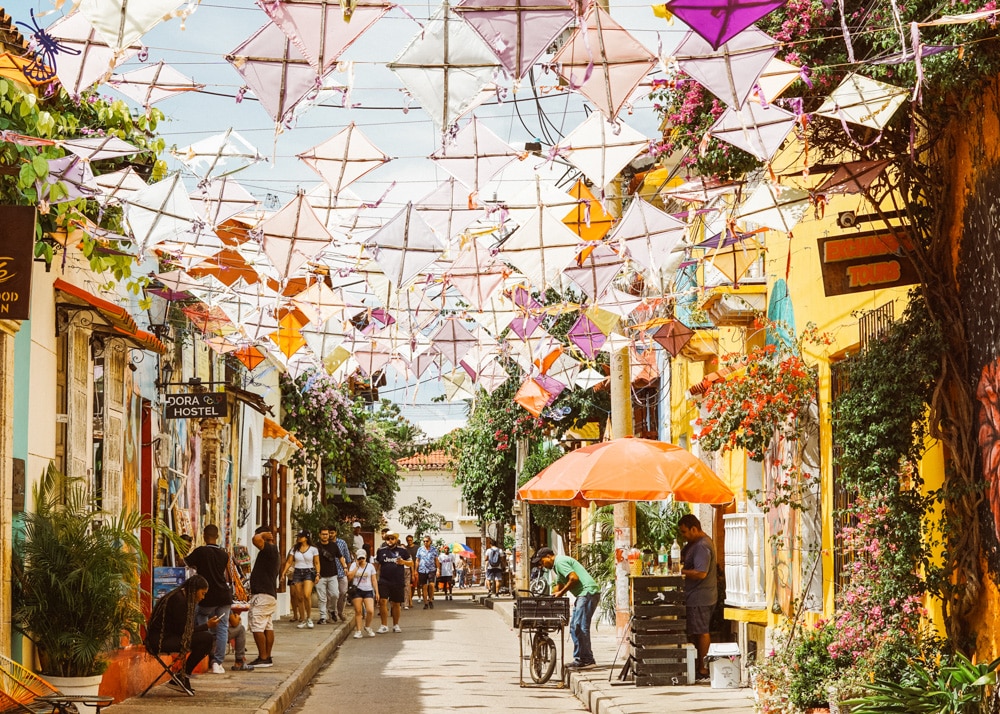



















4 comments
Thanks for sharing.
The other day, while I was at work, my sister stole
my iPad and tested to see if it can survive a twenty five foot drop, just so she can be a youtube sensation. My apple ipad
is now destroyed and she has 83 views. I know this is totally off topic but I had to share it
with someone!
I think the admin of this site is truly working hard in support
of his web page, because here every data is quality based information.
Unleash fun and excitement with Miami Party Bus Services. Perfect for proms, weddings, and bachelorette parties, our Luxury Party Bus Miami offers premium comfort. Experience the Best Party Bus Rentals Miami for any celebration!